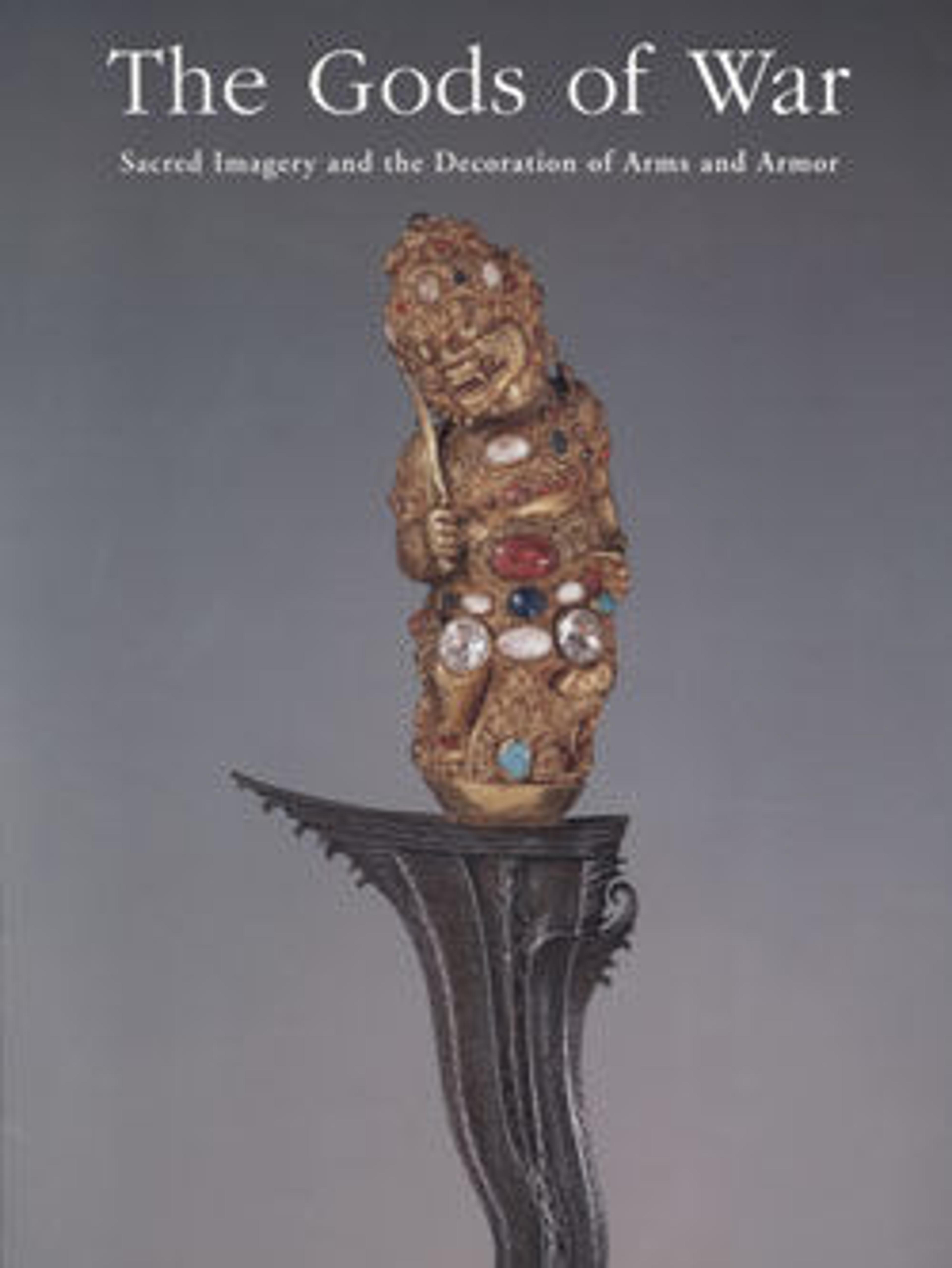Sword guard (Tsuba) Depicting Bodhidharma (達磨図鐔)
The individual elements of the hilt of a Japanese sword are unique in the history of edged weapons in that they are intended to be seen both as funtional parts of the sword and as independent works of art. The most prominent of these elements is the tsuba, the disklike guard that separates the base of the blade from the top of the grip. The decoration of tsuba encompasses a wide range of themes: naturalistic scenes, secular stories, and, as this tsuba demonstrates, religious symbolism.
This example is made of iron, chiseled in high relief and damscened with gold. It depicts a famous episode from the life of Bodhidharma, known in Japan as Bodaidaruma or Daruma, traditionally regarded as the twenty-eighth patriarch of Buddhism in India, who founded Ch'an Buddhism in China during the sixth century. Cha'an Buddhism, which developed out of the meeting of Indian Buddhism and the indigenous Taoism of China, was introduced into Japan, where it was known as Zen, in the ninth century and flourished there after the twelfth century. This tsuba shows Daruma engaged in the legendary practice of zazen, a form of motionless and though-free meditation, which he is said to have maintained, in perfect stillness, for nine years. He is frequently portrayed in this contemplative state on tsuba and in other Japanese artworks.
The artist Yoshihiro (喜寛), real name Noda Uhachi (野田宇八), was a student of the first generation Tsuchiya Yasuchika (土屋安親, 1670-1744). He was born in Genroku six (元禄, 1693) and is said to have died around Meiwa two (明和, 1765).
This example is made of iron, chiseled in high relief and damscened with gold. It depicts a famous episode from the life of Bodhidharma, known in Japan as Bodaidaruma or Daruma, traditionally regarded as the twenty-eighth patriarch of Buddhism in India, who founded Ch'an Buddhism in China during the sixth century. Cha'an Buddhism, which developed out of the meeting of Indian Buddhism and the indigenous Taoism of China, was introduced into Japan, where it was known as Zen, in the ninth century and flourished there after the twelfth century. This tsuba shows Daruma engaged in the legendary practice of zazen, a form of motionless and though-free meditation, which he is said to have maintained, in perfect stillness, for nine years. He is frequently portrayed in this contemplative state on tsuba and in other Japanese artworks.
The artist Yoshihiro (喜寛), real name Noda Uhachi (野田宇八), was a student of the first generation Tsuchiya Yasuchika (土屋安親, 1670-1744). He was born in Genroku six (元禄, 1693) and is said to have died around Meiwa two (明和, 1765).
Artwork Details
- Title: Sword guard (Tsuba) Depicting Bodhidharma (達磨図鐔)
- Date: 18th century
- Culture: Japanese
- Medium: Iron, gold, silver
- Dimensions: D. 3 1/4 in. (8.3 cm); thickness 9/16 in. (1.4 cm); Wt. 8.9 oz. (252.3 g)
- Classification: Sword Furniture-Tsuba
- Credit Line: Edward C. Moore Collection, Bequest of Edward C. Moore, 1891
- Object Number: 91.1.800
- Curatorial Department: Arms and Armor
More Artwork
Research Resources
The Met provides unparalleled resources for research and welcomes an international community of students and scholars. The Met's Open Access API is where creators and researchers can connect to the The Met collection. Open Access data and public domain images are available for unrestricted commercial and noncommercial use without permission or fee.
To request images under copyright and other restrictions, please use this Image Request form.
Feedback
We continue to research and examine historical and cultural context for objects in The Met collection. If you have comments or questions about this object record, please complete and submit this form. The Museum looks forward to receiving your comments.
